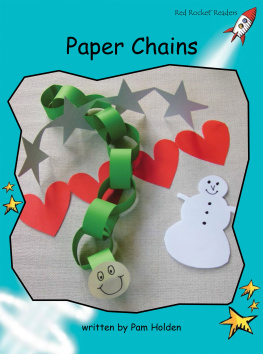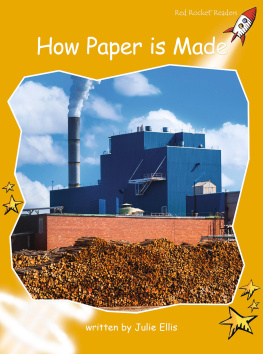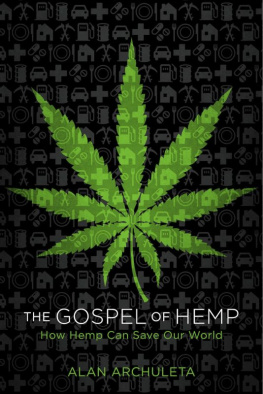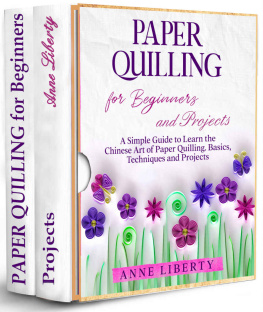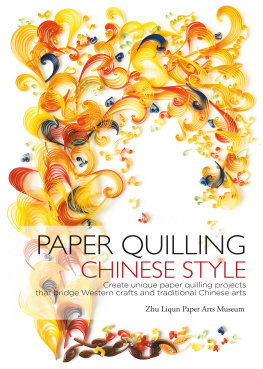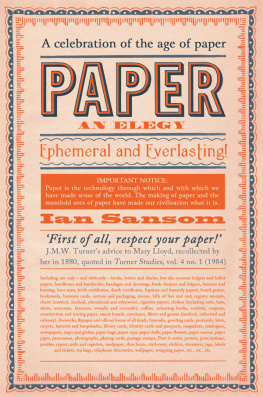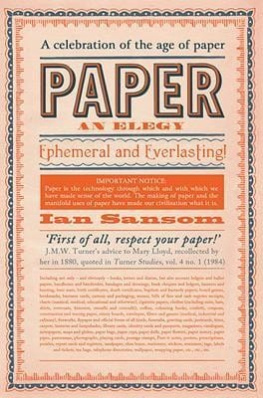
Jointly published in 2021 by Sinolingua Co., Ltd., Beijing, China, and The Rosen Publishing Group, Inc., New York, New York, United States.
Copyright 2021 by The Rosen Publishing Group, Inc.
All rights reserved. No part of this book may be reproduced in any form without permission in writing from the publisher, except by a reviewer.
First Edition
Editor: John Kemmerer
Designer: Rachel Rising
Photo credits: Cover VW84/iStock/Getty Images; cover, pp. Rafa Elias/Moment/Getty Images.
Some of the images in this book illustrate individuals who are models. The depictions do not imply actual situations or events.
Cataloging-in-Publication Data
Names: Bergin, Sean.
Title: The Chinese invent papermaking / Sean Bergin.
Description: New York: Rosen Publishing, 2021. | Series: Crazy cool China | Includes glossary and index.
Identifiers: ISBN 9781499469127 (pbk.) | ISBN 9781499469134 (library bound) | ISBN 9781499469141 (ebook)
Subjects: LCSH: PaperJuvenile literature. | PapermakingJuvenile literature. | PapermakingChinaHistoryJuvenile literature. | InventionsChinaHistoryJuvenile literature.
Classification: LCC TS1105.5 B474 2022 | DDC 676dc23
Manufactured in the United States of America
CPSIA Compliance Information: Batch #BSRYA22. For further information contact Rosen Publishing, New York, New York, at 1-800-237-9932.

Contents
Papermaking:
One of the Four Great Inventions" of China

In our digital age, we take paper for granted. Its all around us, cheap and easily available, but we do not always feel it is essential to our lives. After all, we can use our smartphones and other devices to send texts and email, make notes, perform research, get the news, and read entire books. Yet, hard as it is to imagine, paper has not always been available to us, and civilization was held back without it. Once paper was invented, it became highly prized and utterly transformed the world.
The Chinese discovered that paper could be made relatively quickly, easily, and cheaply, and it had many uses. In fact, the Chinese first used paper primarily as a packing, padding, and wrapping material. It wasnt until about 200 CE that it was commonly used for writing. Paper also allowed the Chinese to invent tea bags, envelopes, paper money, printing, and even toilet paper!
For most of human history, we did not know how to make paper. Written information was carved into stone, bone, and clay tablets. It could also be painted or inked onto sheets of leather, bamboo, wood, or silk. This made books rare, expensive to create and purchase, and very difficult to carry and transport. This also meant that, for thousands of years, very few people had access to books or learned how to read and write.
This all changedquickly and dramaticallywith the discovery of papermaking. We have the Chinese to thank for the invention of paper, beginning around the second century BCE. It was at this time that a process was gradually discovered and improved upon that used plant fibers to create a smooth, even, lightweight material we know as paper. It was made from mulberry bark, flax fibers, waste, old rags, and even discarded fishing nets.

Even in today's digital world, paper is still all around us and something we use every day.

A man makes paper using traditional methods, separating pulp and fiber from water.
What would our daily lives be like without paper? We would have no books or magazines, for a start. There would be no paper money, only coins. We would have nothing with which to wrap our presents, box our shipments, hold our purchases from grocery and clothing stores, or contain our sketches and notes and thoughts. We would have no tissues or paper towels. And, perhaps worst of all, we would have no toilet paper!
Knowledge of papermaking spread from China to the Islamic world and then Europe beginning around the eighth century, and the world was forever changed. The majority of people learned how to read and write, and knowledge was shared far and wide. Civilizations flourished around the globe, and the lives of ordinary people were greatly enriched. By inventing paper, the Chinese gave the world one of the greatest gifts in history, gorgeously gift-wrapped!

Paper comes in all shapes, sizes, colors, and textures.
Writing
Before Paper

Before the papermaking process was invented by the Chinese around the second century BCE, humans were using several different ways to record and convey information in written form. Each of the materials used to record and deliver information, however, was .
An alternative writing material known as parchment was used by ancient Egyptians, Assyrians, and Babylonians stretching back as far as the twenty-fourth century BCE. It was newly popularized by the ancient Greeks in around the fifth century BCE, possibly due to a shortage of increasingly expensive papyrus. Parchment was made from the skin of goats, sheep, and cows. The skin was scraped and then dried after being pulled and hung tightly.
The earliest examples of preserved writing are found on carved stones and bones. Wet clay was also used to preserve a civilizations and easily broken, but they could be soaked in water, their carvings erased. They could then be reused. The kiln-fired tablets were far more durable and permanent.

Inscriptions of a Chinese poem were on display at the Yellow Crane Tower in Wuhan, China, in 2019.
As early as the 3000s BCE, the ancient Egyptians had invented papyrus, a material similar to paper. In fact, the word paper is derived from papyrus. It was made from the pith, or stem tissue, of a wetland plant called Cyperus papyrus. The papyrus plant grew along the Nile River delta. Thin strips of other, forming a sheet. A second layer of papyrus strips would be placed over the first sheet, with the second layers strips placed at right angles to those of the first. The two sheets were then pounded together.
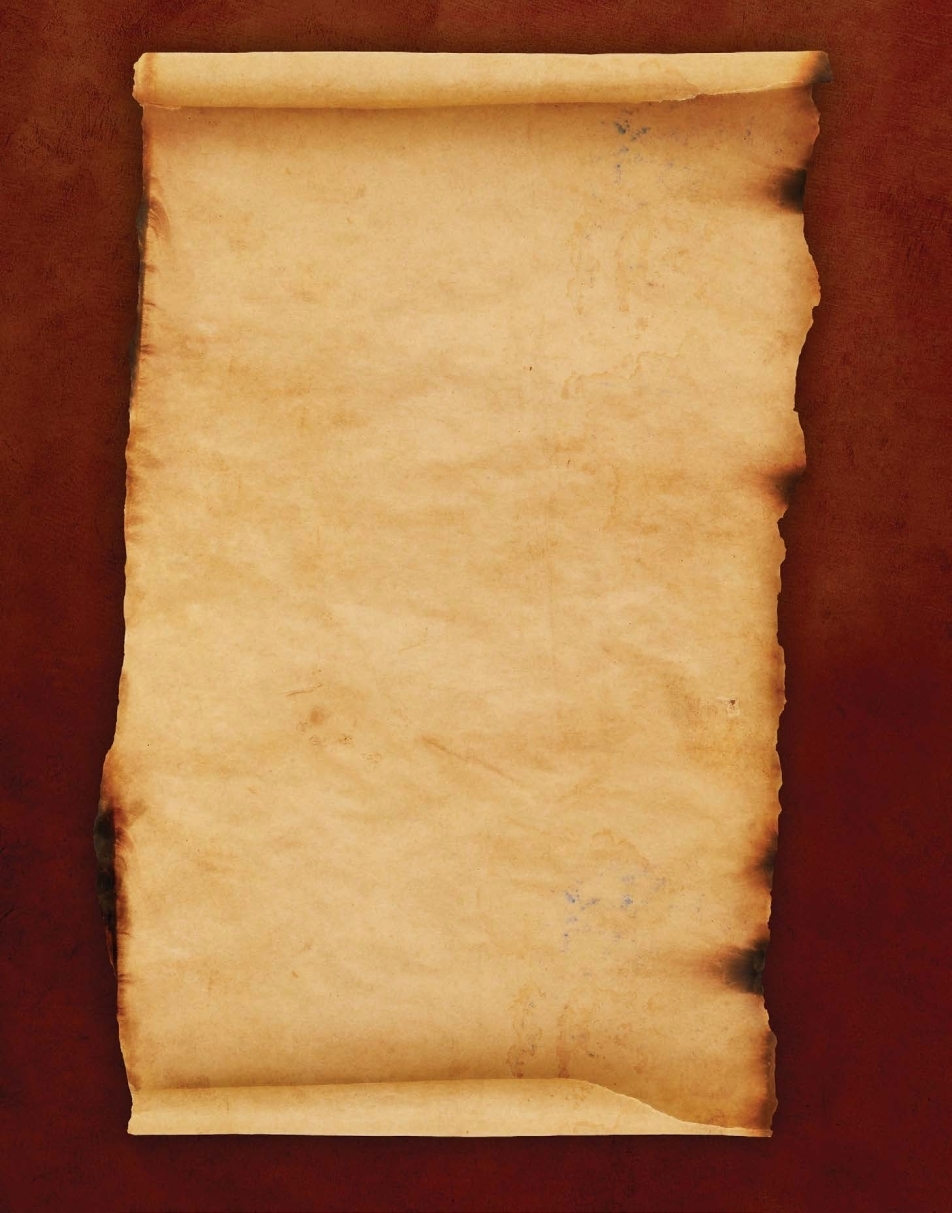
This is a sheet of papyrus, made from the fibers of a reedy wetland plant of the same name that grew along the Nile River delta.
Parchment was more durable than papyrus in both damp and dry climates, though it was more expensive and difficult to make. It was also smoother and more pliable than papyrus and could be folded into small pages that would then be bound into a book form known as a codex. Codices (the plural form of codex) were easier to hold, carry, and store than scrolls. They were also more convenient to read, since turning pages was easier than continuously unrolling a scroll.
Next page



